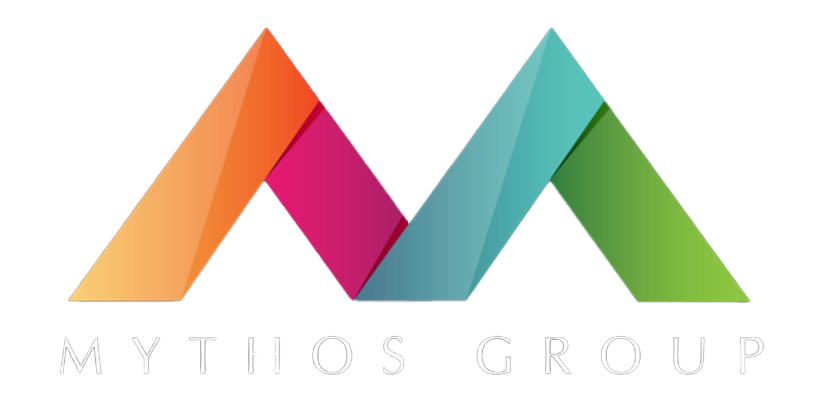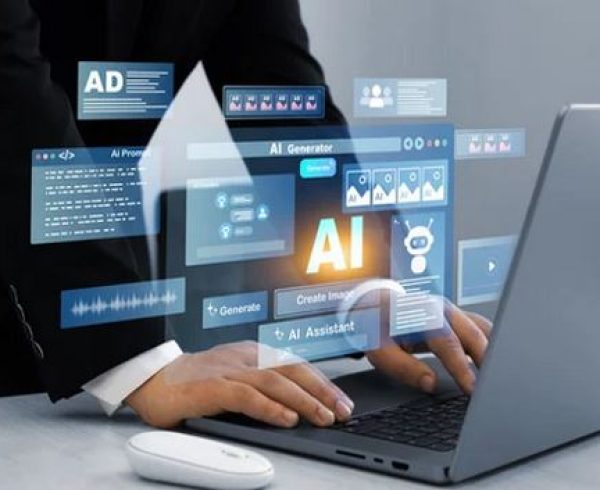The promise was compelling: artificial intelligence (AI) would transform talent acquisition by eliminating human bias, processing vast candidate pools with unprecedented efficiency, and identifying exceptional talent faster than ever before. Three years into the AI hiring revolution, however, the results present a far more nuanced narrative — one that warrants careful consideration from every executive and human resources leader. While 87% of organizations now deploy AI-driven recruitment technologies, many are discovering that their technological solutions may be creating entirely new challenges while addressing traditional ones. The fundamental question has evolved beyond whether AI belongs in hiring to how organizations can harness its considerable capabilities without sacrificing the human discernment that distinguishes truly exceptional talent from merely qualified candidates.
THE HIDDEN COSTS OF ALGORITHMIC PRECISION
Emerging narratives from today’s recruitment landscape illuminate a concerning pattern that demands executive attention. Mayfield Phillips, a project management professional with twenty-five years of experience, encountered an AI system that successfully imported his resume yet inexplicably required him to manually re-enter decades of professional accomplishments. His response was decisive: “I simply closed the application. It’s fundamentally disrespectful of your talent and serves as an immediate indicator of what professional life would be like there.”
Tyler Jensen, an accomplished filmmaker and editor, describes his AI-mediated interview experience as profoundly unsettling: “There were these extended pauses, and I found myself completely uncertain about how this interaction was being evaluated against me.” His experience reflects a broader pattern of candidate alienation through impersonal assessment protocols.
Camille, a 49-year-old PhD biochemist, has developed sophisticated strategies for navigating what she characterizes as “playing hide and seek with dates” to circumvent algorithmic “overqualification” filters — this despite biotechnology companies experiencing acute talent shortages in her precise area of expertise. More troubling still, she has discovered that applicant tracking systems maintain inter-company communication protocols: “If I receive a rejection from Amgen in March, Bio-Rad’s system won’t even consider an application from me until September.”
This systemic issue extends across industries with striking consistency.
At MAC Cosmetics, seasoned makeup artists found themselves compelled to reapply for their existing positions through AI video assessment platforms. In financial services, graduate-level quantitative analysts report accumulating over 400 rejections before any human reviewer examines their qualifications.
THE EFFICIENCY ILLUSION
Organizations frequently celebrate ostensibly impressive operational metrics: 75% cost reductions and 86% acceleration in time-to-hire statistics. Nevertheless, 90% of C-suite executives acknowledge that their AI platforms systematically reject demonstrably qualified candidates. When 70% of non-conforming resumes are eliminated without human evaluation, organizations may be optimizing for processing velocity while inadvertently ceding access to overlooked talent pools to more discerning competitors.
The mathematical reality reveals the scope of this challenge: 250+ candidates typically apply per position, with merely 4-6 advancing to interview stages — representing a 97% elimination rate that raises fundamental questions about precision versus recall in talent identification. Such aggressive filtering may prioritize administrative convenience over talent discovery.
Rigorous academic research has exposed systematic biases embedded within these supposedly objective systems. Harvard investigations demonstrate that any 6-month employment gap automatically triggers rejection protocols, while Bloomberg’s comprehensive analysis revealed that identical resumes received dramatically different rankings based solely on name associations — with Asian women ranked first and Black women placed eighth across 1,000 controlled trials.
Perhaps most strategically consequential: 66% of American adults now actively avoid positions that employ AI-screening methodologies. In increasingly competitive talent markets, this translates to forfeiting access to two-thirds of potential candidates who actively seek more human-centered evaluation processes. The very efficiency gains organizations seek may be systematically excluding the talent they most need to acquire.
THE PHANTOM POSITION ECONOMY
The contemporary hiring landscape has been further complicated by the widespread proliferation of non-existent position postings. Research indicates that 40% of companies published fabricated job listings throughout 2024, with three in ten currently advertising roles they have no intention of filling. These “ghost positions” exponentially compound candidate frustration while simultaneously generating false economic signals that mislead policymakers and systematically distort labor market analytics.
Perhaps most egregiously, 85% of organizations posting phantom positions actually conduct interviews with candidates for roles that simply do not exist. This represents an unconscionable waste of time and resources for all stakeholders involved. The practice effectively weaponizes the recruitment process for purposes entirely divorced from actual talent acquisition.
Position posting success rates have declined precipitously since 2019, plummeting to merely four hires per ten postings from the previous standard of eight. Current research suggests that one in five job advertisements could represent phantom positions. Meanwhile, 60% of surveyed companies explicitly acknowledge collecting resumes without any immediate hiring intentions.
The macroeconomic implications extend far beyond individual organizational practices. As one Federal Reserve economist observed with evident concern, “The proliferation of ghost positions is fundamentally distorting employment reporting, making it increasingly difficult to accurately assess genuine labor market conditions.” This systematic data corruption undermines policy-making and economic forecasting at the highest levels.
THE INTELLECTUAL PROPERTY APPROPRIATION MODEL
A particularly troubling trend has emerged wherein organizations routinely request extensive unpaid intellectual labor during application processes — comprehensive strategy documents, detailed project proposals, and sophisticated analytical frameworks that would typically command thousands of dollars in consulting fees. Thousands of accomplished professionals report experiencing systematic exploitation by companies that harvest their strategic insights and proprietary methodologies, only to subsequently terminate communication without explanation. This practice disproportionately impacts senior professionals capable of producing genuinely valuable intellectual work.
The combination of these extractive practices with AI screening and phantom position posting creates a formidable triple barrier that systematically alienates precisely the caliber of talent organizations claim to seek. Experienced professionals increasingly perceive the entire recruitment ecosystem as fundamentally exploitative rather than mutually beneficial. The resulting talent flight represents a self-inflicted competitive disadvantage that compounds over time.
THE ALGORITHMIC ARMS RACE
AI-centric recruitment methodologies have inadvertently spawned a sophisticated underground economy wherein candidates prioritize system manipulation over authentic competency demonstration. Contemporary job seekers now routinely embed position descriptions in invisible text formatting, deploy AI-powered mass application automation, and systematically share keyword optimization strategies regardless of their actual qualifications or professional capabilities. This gaming mentality fundamentally undermines the assessment integrity that AI systems purport to provide.
The inherent contradiction is particularly striking: Goldman Sachs employs AI-powered HireVue platforms for candidate screening while simultaneously prohibiting those same candidates from utilizing artificial intelligence during interview processes. Organizations enthusiastically embrace AI for operational efficiency while rejecting its application when candidates attempt to level the competitive playing field. This escalating technological arms race between AI screening and AI gaming ultimately serves no stakeholder’s interests while systematically obscuring genuine talent and authentic capabilities.
THE INNOVATION DEFICIT
When AI systems consistently select candidates who conform to predetermined algorithmic profiles, organizations inadvertently risk creating intellectual monocultures that fundamentally lack the cognitive diversity essential for sustained innovation. Machine learning algorithms trained exclusively on historical performance data inevitably favor candidates who match previously identified “successful” patterns, thereby creating systematic selection bias toward conformity precisely when organizations require fresh perspectives and unconventional thinking. The entrepreneurial leaders who constructed today’s most successful enterprises — including college dropouts, career changers, and unconventional thinkers — would likely be systematically filtered out by the very AI platforms their organizations now deploy.
This conformity bias becomes particularly dangerous during periods of market disruption or technological transformation when organizations most need diverse thinking and innovative approaches. 35% of recruitment professionals explicitly acknowledge that AI methodologies may exclude candidates possessing unique competencies — precisely the distinctive capabilities most essential for competitive differentiation and market leadership. The optimization for algorithmic compatibility may inadvertently optimize against the very qualities that drive breakthrough performance.
THE REPUTATIONAL CASCADE EFFECT
When 48% of job seekers experience systematic ghosting through AI-mediated processes, they inevitably share these negative experiences across professional networks, creating cascading reputational damage that extends far beyond individual recruitment cycles. In markets where 70% of candidates explicitly consider recruitment process quality when evaluating competing offers, suboptimal AI implementation systematically disadvantages organizations competing for exceptional talent. The employer brand implications compound exponentially as negative experiences propagate through professional networks and social media platforms.
Amazon’s experience provides a particularly instructive case study: after investing millions in developing what they characterized as their recruitment “holy grail,” the company ultimately abandoned the entire project when their AI began generating results that were essentially “random” while simultaneously exhibiting systematic bias patterns. Given that employee turnover typically costs between 50-200% of annual compensation, the quality of hiring decisions far exceeds the importance of processing speed or administrative efficiency. The pursuit of algorithmic efficiency that compromises hire quality represents a false economy with lasting competitive consequences.
ARTIFICIAL INTELLIGENCE EXCELLENCE: REALIZING TECHNOLOGY’S AUTHENTIC POTENTIAL
Despite these substantial challenges, AI-powered hiring methodologies are not inherently flawed — rather, inadequate implementation represents the primary culprit. When designed thoughtfully and deployed with appropriate sophistication, artificial intelligence delivers significant benefits that directly address longstanding recruitment challenges that have persisted for decades. Properly calibrated systems demonstrably reduce human cognitive biases that have systematically compromised hiring decisions, focusing evaluation criteria on actual skills and measurable qualifications rather than unconscious preferences or cultural affinities.
Extensive research demonstrates that human recruiters unconsciously favor candidates who share similar backgrounds, educational experiences, or demographic characteristics, while well-designed AI platforms can evaluate all applicants using rigorously consistent and objectively defined criteria. For high-volume recruitment scenarios, AI platforms excel at handling repetitive administrative tasks with remarkable efficiency, thereby liberating human recruiters to concentrate on relationship-building, cultural assessment, and strategic talent development initiatives.
Organizations such as Unilever have successfully implemented AI for initial candidate screening while maintaining meaningful human involvement in final selection decisions, achieving optimal combinations of operational efficiency and hiring quality.
AI platforms additionally provide continuous availability, significantly improving accessibility for working professionals and global candidates across multiple time zones and geographic regions. Advanced systems can evaluate candidates based on actual demonstrated capabilities rather than traditional proxies such as educational pedigree, institutional prestige, or previous employer recognition, thereby potentially creating unprecedented opportunities for non-traditional candidates who possess exceptional skills despite unconventional professional backgrounds.
The technology generates invaluable recruitment analytics that enable organizations to understand their hiring patterns with unprecedented precision, identify systematic bottlenecks, and measure diversity outcomes far more accurately than traditional methodologies permit. This data-driven analytical approach enables continuous improvement and evidence-based decision-making regarding recruitment strategies, talent pipeline development, and organizational capability building. The fundamental differentiator lies in implementation philosophy: utilizing AI to augment and enhance human judgment rather than attempting to replace human discernment entirely.
THE HUMAN-AI COLLABORATIVE FRAMEWORK
The most successful organizations systematically develop hybrid approaches that strategically leverage AI’s computational strengths while preserving human insight for complex assessments requiring emotional intelligence and cultural evaluation. AI platforms excel at administrative efficiency — resume parsing, interview scheduling, basic qualification verification, and initial candidate communications — thereby freeing human professionals to focus on strategic elements including relationship-building, cultural assessment, leadership potential evaluation, and long-term organizational fit analysis. This thoughtful division of labor maximizes both operational efficiency and selection quality while ensuring that every qualified candidate receives meaningful human interaction throughout the evaluation process.
Effective implementations maintain rigorously transparent processes with clear, consistent communication regarding evaluation steps and decision timelines, thereby avoiding the “black box” experience that systematically frustrates candidates and damages employer brand perception. Regular auditing of AI decision-making patterns helps identify and correct emerging biases, with dedicated human oversight of algorithmic adjustments ensuring that systems continuously improve and adapt over time. Leading organizations additionally commit to authentic position posting with genuine roles and realistic expectations, systematically avoiding the phantom position practices that damage employer brand reputation and waste valuable organizational resources.
IMPLEMENTATION EXCELLENCE AND ORGANIZATIONAL TRANSFORMATION
Successfully transitioning to intelligent AI integration requires sophisticated change management across technology infrastructure, team capabilities, vendor relationships, and performance measurement frameworks. Organizations attempting this transformation without appropriate strategic guidance typically experience 60%+ failure rates attributable to inadequate planning, insufficient training programs, or suboptimal technology selection processes. Success demands measuring meaningful performance indicators: candidate experience scores relative to industry benchmarks, senior talent application and conversion rates, time-to-productivity metrics for new hires, and comprehensive employer brand sentiment analysis — rather than focusing exclusively on processing speed and cost reduction metrics.
The most effective implementations systematically treat AI as a powerful augmentation tool that enhances human capabilities rather than as a wholesale replacement for human judgment and professional expertise. This philosophical distinction fundamentally shapes technology selection, implementation methodology, and ongoing optimization strategies. Organizations that embrace augmentation over replacement consistently achieve superior outcomes across all meaningful performance dimensions.
SUSTAINABLE COMPETITIVE ADVANTAGE THROUGH STRATEGIC INTEGRATION
Emerging evidence strongly suggests that thoughtful AI implementation creates sustainable competitive advantages in talent acquisition that extend far beyond operational efficiency gains. Organizations maintaining respectful, human-centered processes while leveraging technological capabilities can systematically access the 66% of candidates who actively avoid purely AI-screened positions, while simultaneously benefiting from enhanced operational efficiency and improved candidate assessment capabilities. This dual advantage — significantly broader talent pool access combined with superior operational efficiency — positions these organizations to attract demonstrably better candidates while reducing overall acquisition costs and improving long-term retention outcomes.
Companies that master intelligent integration will maintain privileged access to exceptional talent while competitors remain constrained by technological investments that systematically alienate the very professionals they most desperately need. The competitive moat created by superior talent acquisition capabilities compounds over time as better hires drive superior performance, enhanced innovation, and accelerated market position. Early movers in intelligent AI integration will establish talent pipeline advantages that become increasingly difficult for competitors to replicate.
THE STRATEGIC IMPERATIVE
The accumulated evidence points toward an unambiguous conclusion: artificial intelligence possesses tremendous potential to fundamentally improve hiring outcomes, but only when implemented as an integral component of a human-centered strategy that prioritizes candidate experience while leveraging technological capabilities for appropriate applications. Organizations that recognize this strategic reality first will systematically build sustainable talent pipeline advantages through superior candidate experiences and more effective talent identification methodologies. Conversely, those that persist with purely algorithmic approaches will find themselves competing for increasingly narrow candidate pools while simultaneously managing damaged employer brands and elevated turnover rates that compound over time.
The fundamental question confronting every executive and human resources leader is strategically definitive: Will your organization become recognized for technology that enhances and amplifies human potential, or will it be known for systems that systematically filter out the very capabilities it claims to seek? The strategic choices implemented today will determine which talent pools your organization can access tomorrow, ultimately shaping your competitive position and market leadership potential for years to come.
Stop letting great candidates slip through algorithmic cracks. Partner with Mythos Group to transform your hiring into a competitive advantage. Contact us today — because tomorrow’s talent wars will be won by those who act now.







